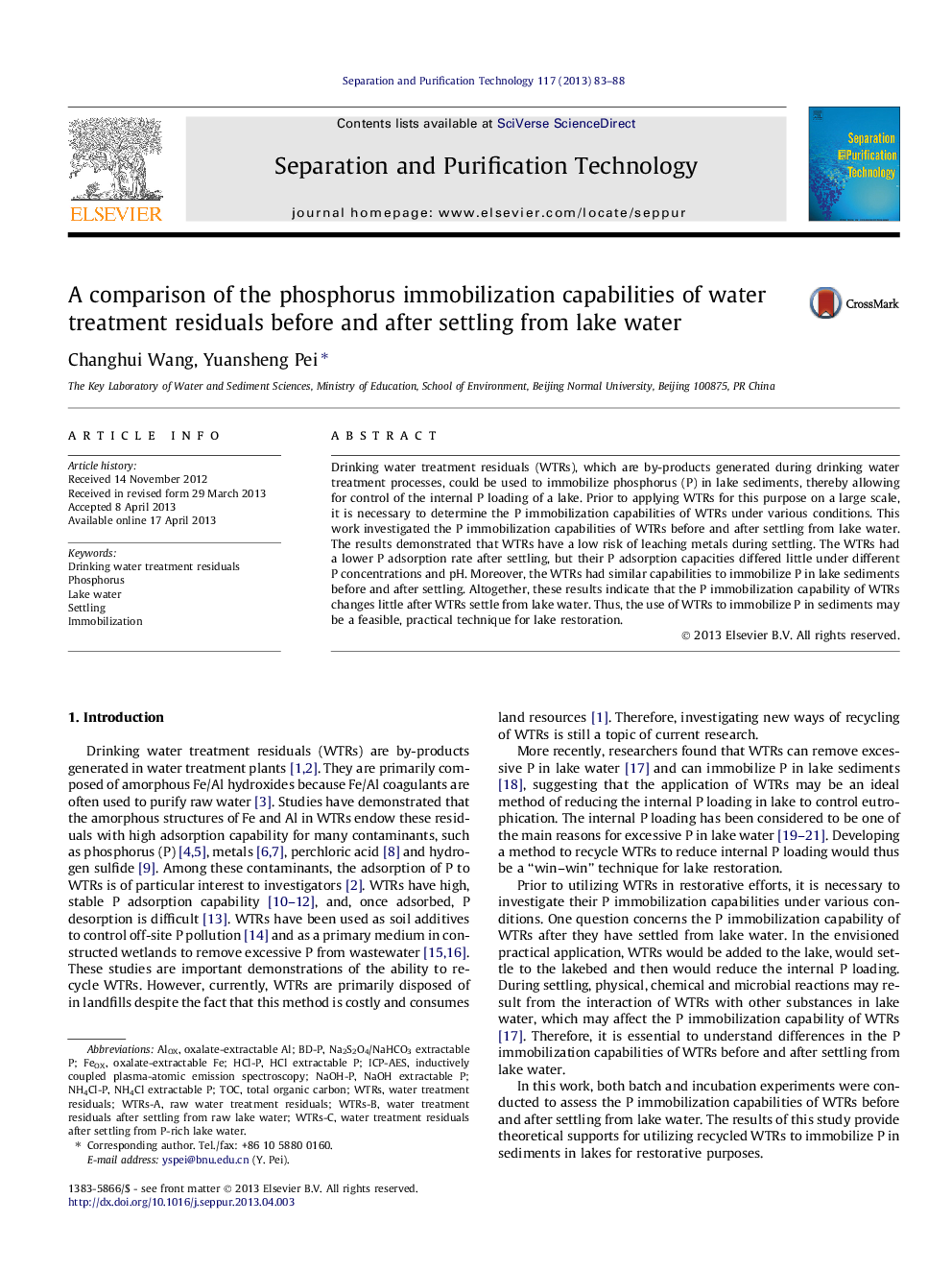| Article ID | Journal | Published Year | Pages | File Type |
|---|---|---|---|---|
| 7044480 | Separation and Purification Technology | 2013 | 6 Pages |
Abstract
Drinking water treatment residuals (WTRs), which are by-products generated during drinking water treatment processes, could be used to immobilize phosphorus (P) in lake sediments, thereby allowing for control of the internal P loading of a lake. Prior to applying WTRs for this purpose on a large scale, it is necessary to determine the P immobilization capabilities of WTRs under various conditions. This work investigated the P immobilization capabilities of WTRs before and after settling from lake water. The results demonstrated that WTRs have a low risk of leaching metals during settling. The WTRs had a lower P adsorption rate after settling, but their P adsorption capacities differed little under different P concentrations and pH. Moreover, the WTRs had similar capabilities to immobilize P in lake sediments before and after settling. Altogether, these results indicate that the P immobilization capability of WTRs changes little after WTRs settle from lake water. Thus, the use of WTRs to immobilize P in sediments may be a feasible, practical technique for lake restoration.
Keywords
Related Topics
Physical Sciences and Engineering
Chemical Engineering
Filtration and Separation
Authors
Changhui Wang, Yuansheng Pei,
